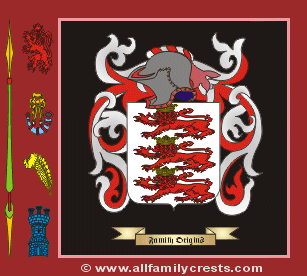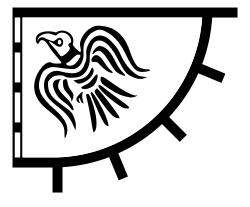My family got this last name when they got off the boat, I believe. I've designed various crests at different times as an exercise (using the SCA rules, usually) but more as art than as a representation of past heraldic symbols connected with my family, since there aren't any. They weren't nobility in the Old Country either.
I did one up for my brother by SCA rules too and I think he still uses it for something.
I did one up for my brother by SCA rules too and I think he still uses it for something.






